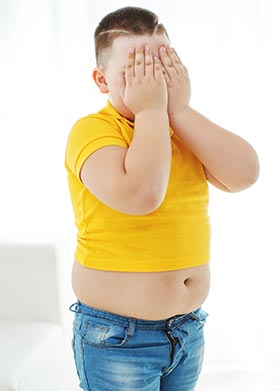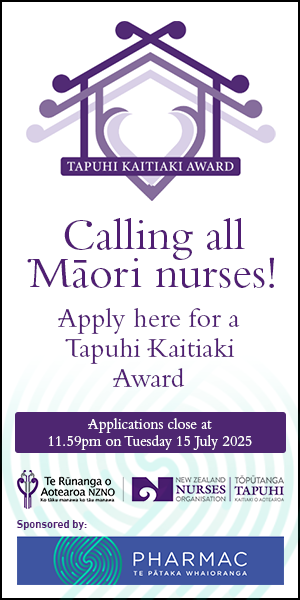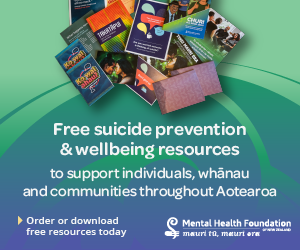
While statistics on childhood obesity differ, they all point to the fact the issue is an ongoing problem in New Zealand. Children who live in lower socio-economic areas, as well as Māori and Pacific children, are consistently over represented in these statistics.1, 2
A survey by the Ministry of Health (MoH) in 2018/19 found that 11.3 per cent of children were obese, and Māori children were 1.6 times more likely to be obese than those of New Zealand European ethnicity.3
There are differences in the rates of childhood obesity between communities, which can be explained, in part, by ethnicity or economic deprivation, but also by the composition of the community.4 This latter predictor of childhood obesity can be due partly to availability of food outlets, such as supermarkets or fast food outlets, transport options and leisure resources.
Ante-natal predictors
Obesity in childhood is a strong predictor of obesity throughout adult development.5 These predictors can start before birth, with maternal obesity and a poor maternal diet ante-natally. A high infant birth weight is also a predictor for obesity.6 These findings are true across ethnicities.1, 7 Co-morbidities of obesity can include poor cardiovascular health, obstructive sleep apnoea, sleep issues, psychological issues, type 2 diabetes and poorer social outcomes.1, 6, 7 So obesity in early childhood can lead to further hurdles and less positive health outcomes throughout the lifespan.
To assist health professionals working with children from two to 18 in managing weight and combating childhood obesity, the MoH has developed clinical guidelines.8 These suggest four stages: monitoring, assessing, managing and maintaining. These guidelines are aimed at health professionals working with families in a clinic setting. They emphasise the need for cultural competence for all health professionals working in this specialty area. They suggest early action, if a child is overweight. The guidelines also emphasise the importance of practitioners taking time with the family, of tailoring their communication style and of building relationships. They also stress the importance of recognising and working with Māori health providers, as well as community-based providers, to ensure better access to services and consistent, comprehensive education and advice.8
Internationally, clinical guidelines published in the British Medical Journal also suggest preventative measures, such as promoting breastfeeding, and school-based interventions. They acknowledge that obesity in children has multi-factorial causes, including behavioural, cultural, genetic and environmental.9
The MoH also supports nurses in schools, fruit in schools, breastfeeding promotion and nutrional information to help combat childhood obesity.3 And the first New Zealand Child and Youth Wellbeing Strategy, released in 2019, includes the goal of reducing food and housing insecurity.10
Parental perception of a child’s weight status can be one of the first barriers to helpful intervention.11 Research has found that parents’ perception of their child’s weight does not differ with ethnicity – all parents tended to underestimate the issue.11 Children presenting to paediatricians in secondary care have a higher rate of obesity than in the general population. This, together with the fact many at-risk children will see a secondary health care service more often than their GP, makes hospital a great starting point to address childhood obesity.12
Although health professionals may be in a good position to start this conversation, researchers found that a formal diagnosis of obesity is made in only 17.2 per cent of children seen by paediatricians.12 While Māori children have a higher rate of obesity, they also have a lower rate of diagnosis, in turn leading to a lower level of investigations and potential management.12 Health professionals need to be recognising and addressing obesity issues as early as possible, as this may be the best possible time to start change for a healthy future.
Barriers to services
Other barriers to accessing services included false or conflicting information. Families could be led to believe things such as healthy food is only food that is fresh or that canned food is unhealthy.13 Health-care services that are biased, judgmental, or where the health-care professional indicates they do not have enough time, knowledge or tools to address the issue, will also negatively affect outcomes.14
The health-care professional needs to be clear and sensitive when delivering information, as the information can be challenging if parents/caregivers are also obese, as they may feel confronted by the discussion.
Past negatives experiences of health services can affect Māori families’ willingness to attend health clinics.1 Culturally appropriate services need to be more than just tokenism; they need to be integrated into the service as a whole,15 and into policy. An Australian study of childhood obesity, specifically targeted at Māori and Pacific peoples, found one of the most important determinants of success was having health-care workers from within the local community who were themselves Māori or Pacific.15 They both ran the service and delivered the care.15
A similar result was also found in the review of the Whānau Pakari study in Taranaki,16 in which childhood obesity was addressed by health-care workers visiting homes. This was an attempt to de-medicalise the issue and provide holistic interventions. Key suggestions from the review of the progamme included incorporating a Māori worldview into the service and that public policy was aimed at ensuring services were available, accessible and appropriate.16
Unmet social needs, such as housing or food insecurity, lead to poorer outcomes.17 Any childhood obesity programme needs to include dietary, physical activity and behavioural interventions to meet its goals. Cultural appropriateness is also critically important. Māori have a world view of balance between the mental / physical / family / social and spiritual domains. A reflection of this world view at government policy level may help in achieving success in childhood obesity interventions, where so many have failed.18
The social determinants of health must be included in interventional programmes. Determinants, such as living and working conditions, behaviours and biology, and psychosocial factors of the individual,19 are often included, but structural determinants need to be included too. These include the socio-economic and political contexts (social policies, public policies, cultural and societal values and governance) of the individual, as well as the person’s socio-economic situation, gender, social class, income, occupation, education and race.19 Race and socio-economic position are both structural determinants of health, and both have been identified as major factors in childhood obesity.

In one study, parents identified the cost of food, followed by the ease of access to takeaway foods, as the most important determinants of childhood obesity.
Although education on nutrition is important for families, this cannot be done without consideration of their economic and social circumstances. In one study, parents identified the cost of food, followed by the ease of access to takeaway foods, as the most important determinants of childhood obesity.20 This was true, regardless of ethnicity. As parents and caregivers play a key role in childhood obesity, their perceptions need to be considered, and the cost of food, access to it and the time taken to prepare it all play a big role.20 To ignore these factors while discussing childhood obesity with a family, can make achieving change seem unrealistic.
Health promotion ideally includes the structural determinants of health, and promotes better health outcomes across communities and society. For this to be achieved, the community has to be willing, and then empowered and then self reliant. This may foster a change and a move away from health professionals being the provider of services.21
Health promotion for Māori needs to acknowledge a secure cultural identity, as this is a prerequisite for good health. Ngā manukura (leadership) and te mara whakahaere (autonomy) are also important for health promotion in a community; without these, interventions will be less effective.22 A good model of health promotion also includes mauriora (access to te ao Māori), waiora (environmental protection, as people and the environment are connected), toiora (healthy lifestyles and reduced risk-taking behaviour) and te oranga (the participation of people in society, including decision making).22 To incorporate this model into all health promotion policy would help promote a community focus and hopefully reach more children at risk of obesity.
Different understandings
Health practitioners must also realise the concept of childhood and family may differ between cultures. Family may mean one thing to New Zealand European children, while whānau may have a different meaning in Māori culture.23 When considering health promotion for childhood obesity, it is vitally important health professionals understand who they need to engage with in the child’s environment.
When considering interventions for children, the stage of a child’s development must be taken into account. Community-based interventions that deal with primary school children, need to consider that children may only be able to process information that is in keeping with their reality and their experience.
The messages on childhood obesity are not only aimed at the adults in the family. Many organisations have now embraced the idea of using children as agents of change. The idea of including children as change agents is that, having been taught about healthy activity and nutrition, they will, in turn, teach their caregivers. However, this puts responsibility on the individual child. It is important to recognised that children are often very malleable and placing such responsibility on them can have some potentially negative effects.24 Such effects could be that the burden of this responsibility can lead to anxiety in the child, and that caregivers can feel their child has been “brainwashed” and is now acting as a “judge” in the home.
Many children and adolescents have issues with body image, and therefore these programmes have potential to cause harm.24 There is definitely a need to teach children about healthy eating and nutrition, but sensitivity and an understanding of a child’s or young person’s developmental stage is essential.
Child-centred care
Many paediatric centres will believe they practise family-centred care. While not new, this model of care is often interpreted vaguely and with some challenges.23 Some paediatric centres and services are currently exploring a model of child-centred care. In child-centred care, the child is more active in their care and is recognised in the context of their family and their development.23 A very dependent young baby still has the same rights as a very vocal five-year-old or teenager. An obese child must have their rights recognised, and their opinions taken into account for any health progress to be made. But do practitioners know how to implement child-centred care? It appears that practice has not yet moved forward enough to support this, as, to my knowledge, most cities still have referrals to clinics, not holistic family programmes.
Intervention programmes can have poor referral rates, poor adherence, and consequently poor success.12 Holistic and culturally appropriate services, with the authority to run themselves according to the needs of their community, are likely to have more success at reaching children at greatest risk of obesity.15, 21 New Zealand is currently only providing such services sporadically. Looking to the future of childhood obesity programmes, interventions need to consider the most at-risk groups, the barriers to children and their families engaging with programmes and the importance of keeping the child/young person at the centre of all interactions.
Kirsty Ure, RN, BN, GradCert (Sci and Tchnlgy, human nutrition), is a staff nurse in paediatric outpatients at Dunedin Hospital.
This article has been reviewed by Donna Burkett, senior lecturer in the School of Nursing, Otago Polytechnic/Te Kura Matatini ki Otago and the co-editors.
References
- Wild, C. E. K., O’Sullivan, N. A., Lee, A. C., Cave, T. L., Willing, E. J., Cormack, D. M., Hofman, P. L., & Anderson, Y. C. (2020). Survey of Barriers and Facilitators to Engagement in a Multidisciplinary Healthy Lifestyles Program for Children. Journal of Nutrition Education & Behavior, 52(5), 528-534. doi.org/10.1016/j.jneb.2019.10.010
- Anderson, Y. C., Taylor, G. M., Grant, C. C., Fulton, R. B., & Hofman, P. L. (2015). The Green Prescription Active Families programme in Taranaki, New Zealand 2007-2009: Did it reach children in need? Journal of Primary Health Care, 7(3), 192-197. doi.org/10.1071/hc15192
- Ministry of Health. (2019). Annual Data Explorer 2018/19: New Zealand Health Survey [Data File]
- Gibb, S., Shackleton, N., Audas, R., Taylor, B., Swinburn, B., Zhu, T., Taylor, R., Derraik, J. G. B., Cutfield, W., & Milne, B. (2019). Child obesity prevalence across communities in New Zealand: 2010–2016. Australian & New Zealand Journal of Public Health, 43(2), 176-181. doi.org/10.1111/1753-6405.12881
- Shackleton, N., Milne, B. J., Audas, R., Derraik, J. G. B., Zhu, T., Taylor, R. W., Morton, S. M. B., Glover, M., Cutfield, W. S., & Taylor, B. (2018). Improving rates of overweight, obesity and extreme obesity in New Zealand 4‐year‐old children in 2010–2016. Pediatric Obesity, 13(12), 766-777. doi.org/10.1111/ijpo.12260
- Howe, L. D., Ellison-Loschmann, L., Pearce, N., Douwes, J., Jeffreys, M., & Firestone, R. (2015). Ethnic differences in risk factors for obesity in New Zealand infants. Journal of Epidemiology & Community Health, 69(6), 516-522. doi.org/10.1136/jech-2014-204464
- Anderson, Y. C., Wynter, L. E., Treves, K. F., Grant, C. C., Stewart, J. M., Cave, T. L., Wild, C. E. K., Derraik, J. G. B., Cutfield, W. S., & Hofman, P. L. (2016). Prevalence of comorbidities in obese New Zealand children and adolescents at enrolment in a community-based obesity programme. Journal of Paediatrics & Child Health, 52(12), 1099-1105. doi.org/10.1111/jpc.13315
- Ministry of Health. (2016). Clinical Guidelines for Weight Management in New Zealand Children and Young People. Wellington: Ministry of Health.
- Deplewski, D. (2019). Obesity in Children. BMJ Best Practice.
- Department of the Prime Minister and Cabinet (DPMC), (Aug 2019). Child and Youth Wellbeing Strategy (PDF, 579 KB).
- Meredith-Jones, K., Williams, S., & Taylor, R. (2016). Agreement between parental perception of child weight status and actual weight status is similar across different ethnic groups in New Zealand. Journal of Primary Health Care, 8(4), 316-324. doi.org/10.1071/HC16002
- Dainty, G. J., Reith, D. M., & Taylor, B. J. (2019). Management of childhood obesity: An audit of clinical practice in secondary care. Journal of Paediatrics & Child Health, 55(10), 1224-1229. doi.org/10.1111/jpc.14385
- Glover, M., Wong, S. F., Fa’alili-Fidow, J., Derraik, J. G. B., Taylor, R. W., Morton, S. M. B., Tautolo, E. S., & Cutfield, W. S. (2019). Ranked Importance of Childhood Obesity Determinants: Parents’ Views across Ethnicities in New Zealand. Nutrients, 11(9), 2145. doi.org/10.3390/nu11092145
- Kaufman, T. K., Lynch, B. A., & Wilkinson, J. M. (2020). Childhood Obesity: An Evidence-Based Approach to Family-Centered Advice and Support. Journal of Primary Care & Community Health, 11, 1-6. doi.org/10.1177/2150132720926279
- Vaughan, L., Schubert, L., Mavoa, H., & Fa’avale, N. (2018). ‘Hey, We Are the Best Ones at Dealing with Our Own’: Embedding a Culturally Competent Program for Māori and Pacific Island Children into a Mainstream Health Service in Queensland, Australia. Journal of Racial and Ethnic Health Disparities, 5(3), 605-616. doi:10.1007/s40615-017-0406-5
- Anderson, Y. C., Wynter, L. E., Grant, C. C., Cave, T. L., Derraik, J. G. B., Cutfield, W. S., & Hofman, P. L. (2017). A Novel Home-Based Intervention for Child and Adolescent Obesity: The Results of the Whānau Pakari Randomized Controlled Trial. Obesity (19307381), 25(11), 1965-1973. doi.org/10.1002/oby.21967
- Atkins, M., Castro, I., Sharifi, M., Perkins, M., O’Connor, G., Sandel, M., Taveras, E. M., & Fiechtner, L. (2020). Unmet Social Needs and Adherence to Pediatric Weight Management Interventions: Massachusetts, 2017–2019. American Journal of Public Health, 110, S251-S257. doi.org/10.2105/AJPH.2020.305772
- Littlewood, R., Canfell, O. J., & Walker, J. L. (2020). Interventions to prevent or treat childhood obesity in Māori & Pacific Islanders: a systematic review. BMC Public Health, 20(1), 725-725. doi.org/10.1186/s12889-020-08848-6
- Solar, O., & Irwin, A. (2010). A conceptual framework for action on the social determinants of health. Social Determinants of Health Discussion Paper 2 (Policy and Practice). Geneva: World Health Organization.
- Glover, M., Wong, S. F., Taylor, R. W., Derraik, J. G. B., Fa’alili-Fidow, J., Morton, S. M., & Cutfield, W. S. (2019). The Complexity of Food Provisioning Decisions by Māori Caregivers to Ensure the Happiness and Health of Their Children. Nutrients, 11(5), 994-994. doi.org/10.3390/nu11050994
- Whitehead, D. (2004). Health promotion and health education: Advancing the concepts. Journal of Advanced Nursing, 47(3), 311-320. doi.org/10.1111/j.1365-2648.2004.03095.x
- Durie, M. (1999). Te Pae Māhutonga: a model for Māori health promotion. Health Promotion Forum of New Zealand Newsletter, 49, 2-5.
- Ford, K., Dickinson, A., Water, T., Campbell, S., Bray, L., & Carter, B. (2018). Child Centred Care: Challenging Assumptions and Repositioning Children and Young People. Journal of Pediatric Nursing, 43, E39-E43. doi.org/10.1016/j.pedn.2018.08.012
- Burrows, L. (2017). Children as change agents for family health. Health Education (0965-4283), 117(5), 498-510. doi.org/10.1108/HE-10-2016-0044




